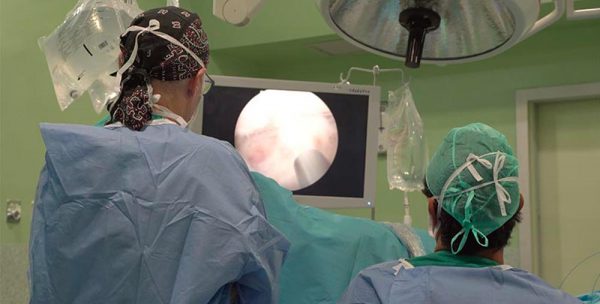TreatmentBenign Prostate Hyperplasia
Home » Benign Prostatic Hyperplasia » Benign Prostatic Hyperplasia Treatment
Benign Prostatic Hyperplasia Treatment
The general treatment of BPH will depend on the clinical situation of the individual.
In those patients with minimal symptoms and little effect on the quality of life, expectant monitoring shall be suggested, sometimes including recommendations on changes in habits and lifestyle, although its effectiveness is debatable.
There are a number of factors that indicate a high probability of disease progression and worsening of symptoms:

Pharmacological therapy
BPH therapy, when necessary, begins with pharmacological therapy. The choice of one drug or another is based on the type and intensity of the symptoms, prostate size, possible incompatibilities with other medications and, in some cases, according to the patient’s preferences.
» When obstructive symptoms predominate:
· Alpha-blockers:
Indicated in prostates under 40 cc with predominantly obstructive symptoms. Achieves an improvement in IPSS scores and maximum flow. They do not decrease prostate size.
Side effects include a drop in blood pressure and may cause ejaculation alterations. There is a possibility that they may lead to floppy iris syndrome. So, if you are taking alpha-blockers and are going to undergo cataract surgery, you should notify your ophthalmologist.
· 5-alpha-reductase inhibitors:
Su efecto It takes between 6 and 12 months before their effects are noticeable. They are used in patients with moderate to severe symptoms and with large prostates. They have been proven to stop the progression of the disease.
As side effects, ejaculation alterations stand out. They can contribute to the appearance of erectile dysfunction and, in 1% of cases, gynaecomastia (increase in breast volume) with slight mastodynia (breast pain) has been described.
· Combination of alpha-blockers and 5-alpha-reductase inhibitors: More effective in combination than separately. It is administered to patients with mild to severe symptoms and prostate volumes above 40 cc. They increase maximum flow, reduce prostate volume and reduce the risk of disease progression.
» When filling symptoms predominate:
· Anticholinergics:They produce bladder relaxation during the filling phase, reducing the symptoms.
The most common side effects include dry mouth, constipation and blurred vision.
·Beta 3 adrenergic receptors:
The mechanism of action is different, and they do not produce the same adverse effects as anticholinergics.
They cannot be administered to a patient with poorly controlled elevated blood pressure.
Combinations:Anticholinergics + alpha blockers. Indicated for patients with mixed symptoms.
» Other treatments:
· Phytotherapy:It has a limited role, but a good general muscle tone improves the strength of the bladder muscles and, therefore, micturition.
· Phosphodiesterase type 5 inhibitors:
First line of treatment for erectile dysfunction. There are studies that support the effectiveness of tadalafil while treating lower urinary tract symptoms administered on a daily basis. Treatment option mainly for patients with BPH and Erectile Dysfunction.
Surgery
Surgical treatment is proposed when symptoms have progressed despite treatment with drugs, when the quality of life is affected, when there is a high risk of complications, or when we encounter one of the following:
Laser Surgery
In our unit, we put at your disposal the latest alternatives of minimally invasive surgical treatments for BPH. We have the widest experience in the country and worldwide in several of them (see specific section):
